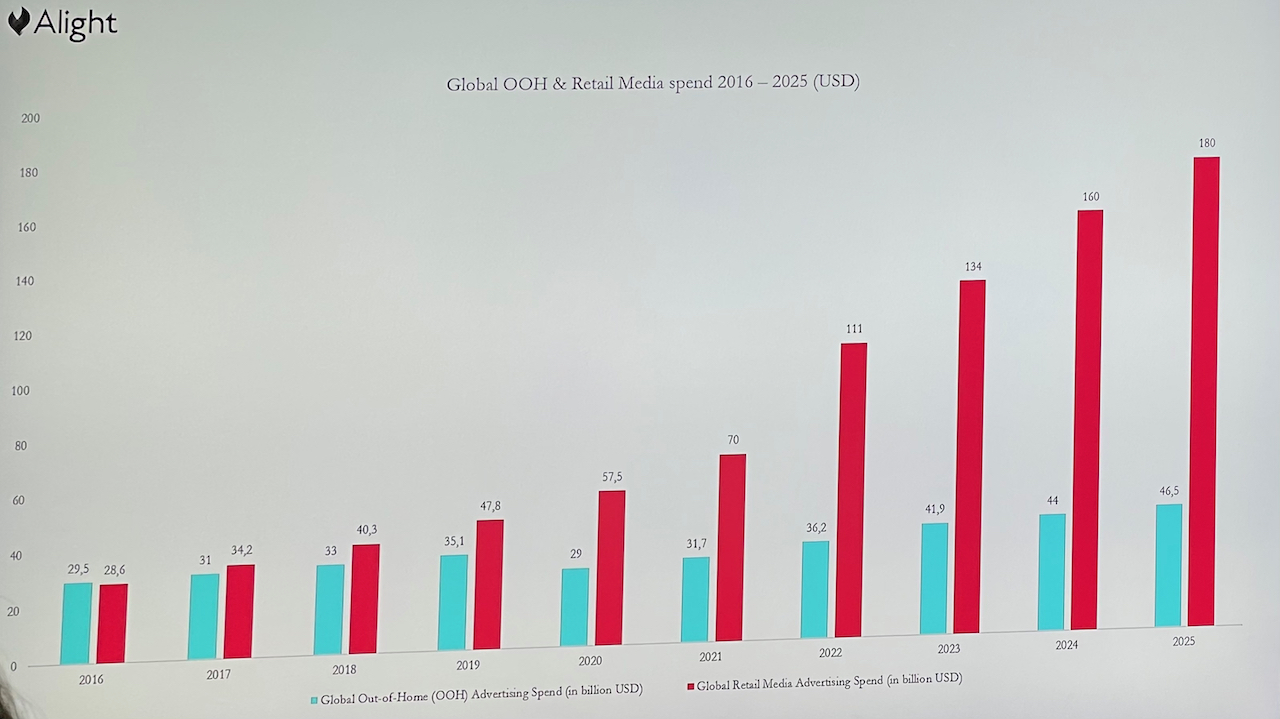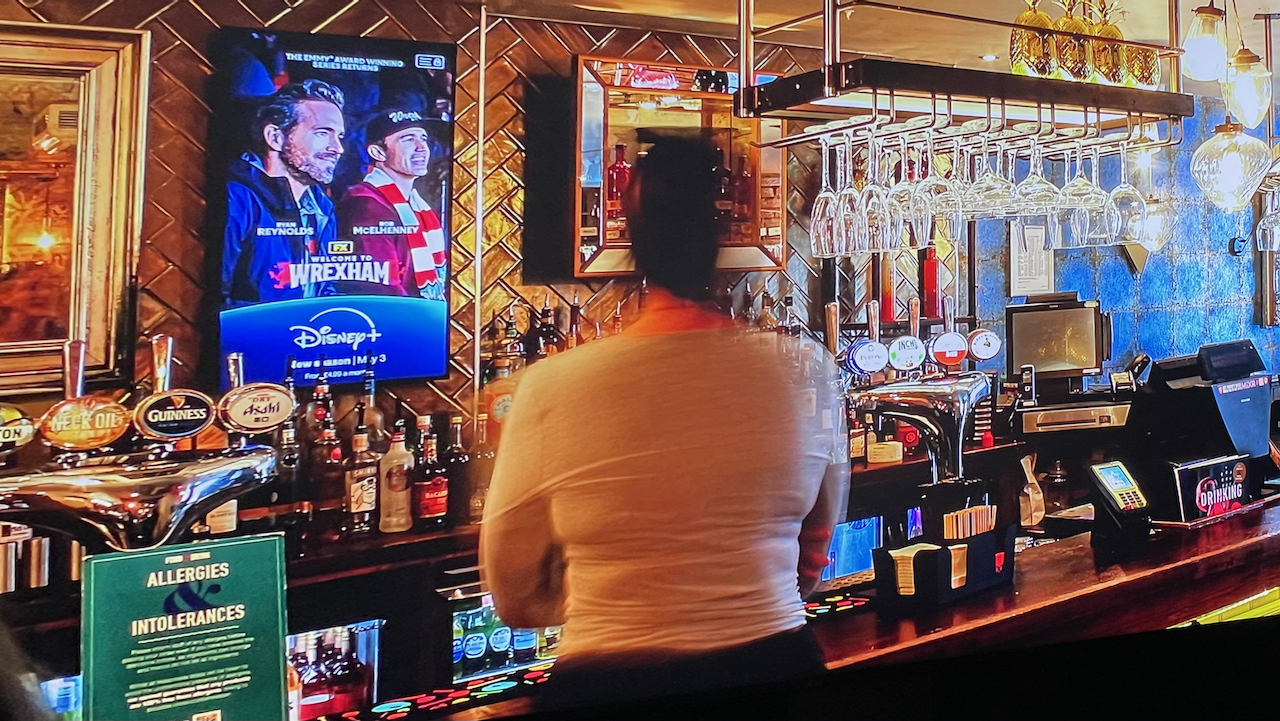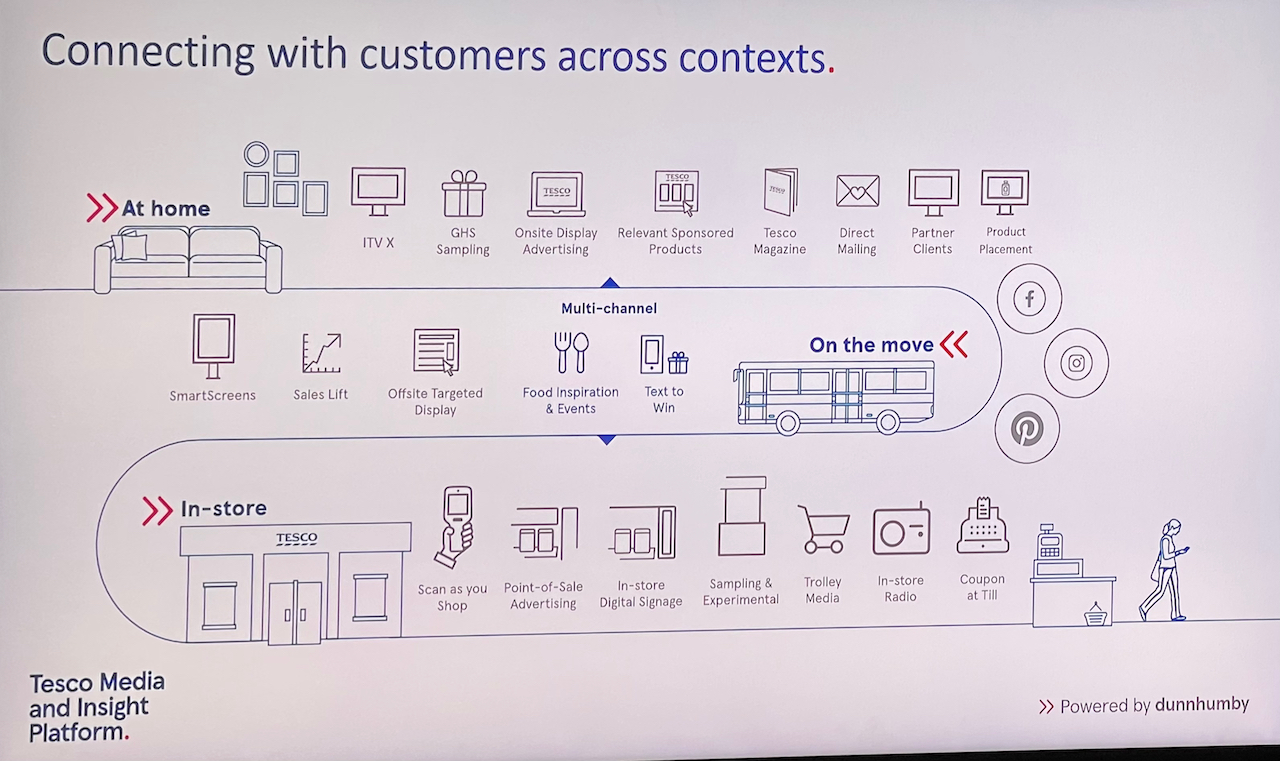Retail Media and out of Home
In this article, I present another key topic from the Milan meeting: the dynamic growth of retail media. Retail media is a crucial element driving the growth of the out-of-home advertising sector.
The European Forum of the World Out of Home Organization (WOO), which took place on November 5 and 6, 2024, in Milan, brought a wealth of inspiring presentations. In previous articles, you can read about the potential of out-of-home advertising, its future and challenges, and data and research in OOH.
Matthew Dearden, CEO and co-founder of Alight, discussed this segment and debunked several myths associated with it in his presentation, "Unlocking the potential of retail DOOH media."
Retail Media is Growing
Retail media is advertising that encompasses the entire retailer's ecosystem. It covers areas from online channels – websites and applications – to physical spaces where the customer interacts with the brand.
Matthew Dearden presented the impressive scale of the segment.
In 2023, global retail media spending reached $134 billion, significantly exceeding spending on traditional OOH advertising ($41.9 billion).

Omnichannel Ecosystem
Retail media covers all consumer touchpoints, both in digital and physical spaces. It's not just online advertising, but also extensive networks of screens in stores, shopping centers, and even pubs. It's a combination of marketing and sales that relies on first-party data, allowing for precise targeting of customers. Currently, four out of ten retailers plan to launch their own networks of advertising screens at points of sale. This underscores the growing importance of the channel.
Challenges in Retail Management
Matthew Dearden emphasized that managing a network of screens requires completely different skills than traditional retail operations. It's a complex process, including hardware installation (LCD screens, appropriate enclosures and installation systems, network infrastructure, data security), content management (players, content management systems, programmatic), and customer behavior analysis (real-time audience measurement and demographics, eye-tracking, targeting). Another challenge is monitoring screen operation and diagnosing malfunctions. In this context, Dearden quoted the famous line from the movie "Field of Dreams “: "If you build it, they will come”. He pointed out that the key to retail media success is proper infrastructure preparation and attention to the quality of displayed content.
Case Study: Stonegate Pub Company
One inspiring example of effective retail media utilization is Stonegate Pub Company, the largest hospitality industry entity in the UK.
The company manages 4,500 pubs and bars across the country. They generate 100 million visits annually. Stonegate created a network of digital screens and a customer loyalty app in its venues. Thanks to precise targeting, brands like Jameson, Chambord, and WKD effectively increased sales. The results are impressive – customers who saw MiXR ads in Stonegate pubs were 33% more likely to purchase Jameson, 40% more likely to purchase Chambord, and 44% more likely to purchase WKD.
Brands in Retail Media
Dearden also emphasized that retail media can be attractive to various types of brands. He distinguished three categories of brands: endemic, closely related, and non-endemic. Endemic brands include, for example, Coca-Cola, Smirnoff, and Walkers – they fit perfectly with the character of places like pubs. Closely related brands include, for example, Apple Pay or Uber, while non-endemic brands are those not directly associated with the location. The latter include Disney+, Adidas, and British Airways, which, thanks to retail media, are finding new ways to reach customers.

Potential of 1st Party Data
Thanks to 1st party data, retail media allows for precise targeting – for example, information that a customer is a 28-year-old man who visits a pub three times a week enables tailoring advertising content to the recipient's profile. This type of data is extremely valuable, especially in the context of more personalized advertising campaigns.
Potential Sources of Advertising Budgets
Dearden drew attention to another important issue. Retail media can attract larger advertising budgets through integration with various channels and forms of advertising (so-called "through the line media planning"). Thanks to comprehensive planning, which includes both physical and digital spaces, brands can more effectively reach consumers and maximize the reach of their campaigns.
In another presentation, we learned how this topic looks from the perspective of a large retail chain like Tesco in the UK. Connor Chappell from Tesco Media & Insight Platform showed the growing role of retail media as an effective communication channel with consumers.

Retail media, as Chappell explains, is advertising embedded within the retailer's direct ecosystem. It uses loyalty data to precisely target consumers at various stages of the purchasing journey. Retail media allows brands at Tesco to inspire customers at different touchpoints.
· Connected store – this is a space where brands present visual and engaging campaigns very close to their products
· Onsite – includes interactions with customers browsing tesco.com and using the Tesco Grocery & Clubcard app
· Offsite – creates touchpoints with Tesco Clubcard customers outside the store, increasing revenue
Retail Media and OOH – Synergy Effect
Connor Chappell emphasized that combining OOH advertising with in-store advertising yields better results than standalone OOH advertising. Thanks to this approach, brands can achieve twice the APM rates, twice the viewing time, and 3.5 times better brand recall.
Connor Chappell highlighted three important points:
1. Join the evolution of retail media
2. Leverage the potential of loyalty data
3. Combine OOH with retail media to generate measurable results
Summary
Retail media is not only a new communication channel but also a space for innovation and experimenting with advertising formats. By leveraging modern technologies and loyalty data, retail media is becoming a tool for brands that want to effectively reach consumers and build lasting relationships with them.
Both presentations on retail media showed that this segment has enormous potential as a new growth factor for the out-of-home advertising industry. The integration of DOOH media with retailer ecosystems, the use of advanced technologies and data, and openness to cooperation with various types of brands make retail media a powerful marketing tool. Thanks to examples like Stonegate, we see that Retail media can effectively increase sales and build consumer engagement.
